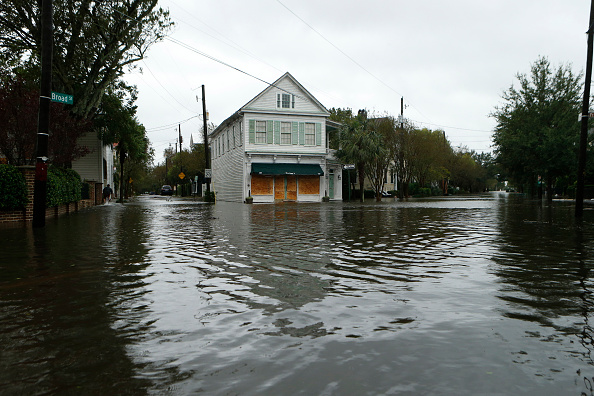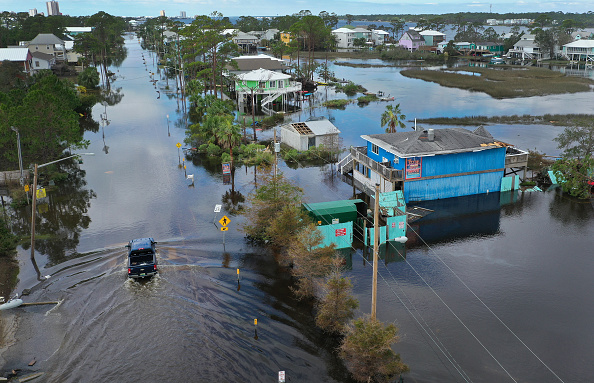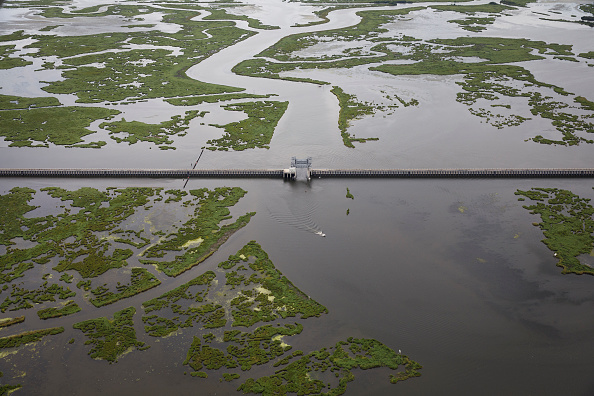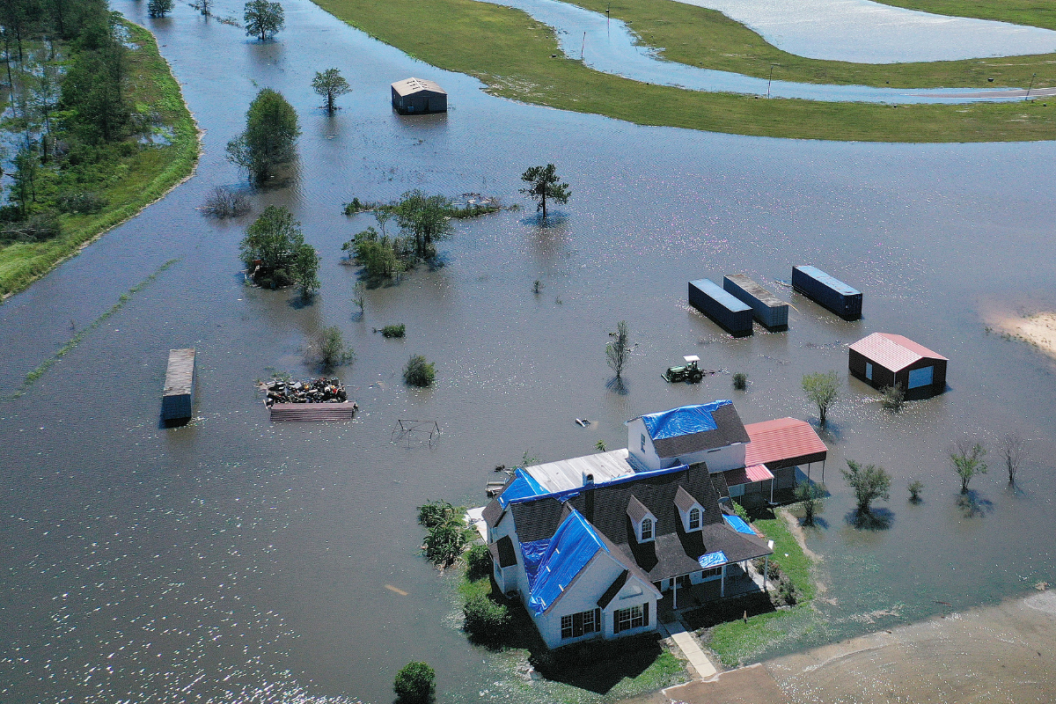It's no secret that human-caused climate change is leading to rising sea levels. Coastal communities around the world are already seeing the effects of warming global temperatures and melting Arctic ice. According to the National Oceanic and Atmospheric Administration (NOAA), the "sea level along the U.S. coastline is projected to rise, on average, 10 - 12 inches (0.25 - 0.30 meters) in the next 30 years (2020 - 2050), which will be as much as the rise measured over the last 100 years (1920 - 2020).
Videos by Wide Open Country
10-12 inches may seem insignificant, but it's not. Many major U.S. cities are along the coast and will all experience the devastating impacts of not just flooding, but also hurricanes and other extreme weather events that put stress on city drainage systems.
Southern Cities and Rising Seas

CHARLESTON, SC - OCTOBER 8: Water floods the streets on and around Broad Street in the wake of Hurricane Matthew on October 8, 2016 in Charleston, South Carolina.(Photo by Brian Blanco/Getty Images)
Southern cities, especially, are at risk. According to a 2017 paper published in Geophysical Research Letters, the Southern U.S. is experiencing faster sea-level rise than areas north of Cape Hatteras in North Carolina. Earlier this year, NPR released an article stating by 2050 the sea level will rise the same amount as it has in the previous 100 years. This research is scary — and rightfully so. Many coastal cities in the South are already experiencing record-breaking flooding events.
Charleston, SC, photographer, and engineer Jared Bramblett has been documenting sea level rise and flooding in the Lowcountry through the Mean High Water project. The severity of flooding events in Charleston, specifically, is only worsening. As the city grows, new developments are built in areas at high risk for flooding. In 2019, Charlestonians experienced 89 flooding events and 69 in 2020, according to NASA's Earth Observatory.
It's not just Charleston, though. Many Southern U.S. cities — including all of coastal Florida — are at risk of devastation from rising sea levels. Still, Southern cities are experiencing expansive growth as people seek the region's industrial growth and warmer weather. Data from the U.S. Census, interpreted by US News & World Report, shows that the South grew 10.2% since 2010's Census, making it the fastest-growing region in the country. As more Americans move South, more Americans are at risk from the adverse effects of rising sea levels.

GULF SHORES, AL - SEPTEMBER 17: An aerial view from a drone shows a vehicle driving through a flooded street after Hurricane Sally passed through the area on September 17, 2020 in Gulf Shores, Alabama. (Photo by Joe Raedle/Getty Images)
Cities like Wilmington, Miami, and New Orleans are also seeing major changes due to rising sea levels. Not only are coastal Southern cities affected by flooding, but they are also seeing increased hurricane activity. According to the Fourth National Climate Assessment, 2017's hurricane season was particularly damaging with $306.2 billion in damages, breaking 2005's previous record of $214.8 billion during the year of Hurricanes Dennis, Katrina, Rita, and Wilma.
Rising seas are a problem for all coastal communities, but the South is more likely to see the impact of extreme weather events like hurricanes and experience extreme tidal flooding. With the South's seemingly non-stop growth it's hard to imagine a future without massive impact to the South's population, especially since the South has the highest rate of poverty compared to other regions, with the coastal states of Louisiana, Mississippi, Alabama, Georgia, and South Carolina among the 10 poorest states in the nation according to the 2020 Census.
It's easy to discount the effect of rising sea levels and might be reassuring to think that sea-level rise cannot be that bad — but it is, especially when the Southern U.S. continues to be ravaged by ocean water, which not only damages property but also harms the South's unique ecosystems and affects the availability of drinking water for many of these places.
The easy solution would be to just have coastal Southerners relocate inland, but it's not possible nor is it right. For many Southerners, relocation is inaccessible, whether due to moving expenses, familial commitments, or other reasons that prevent moving. Some Southerners just love where they live and appreciate the rich culture and community of the South and don't want to leave their home. In any case, Southerners love their states and coastal cities — and their growth has had continued importance in a changing economy.
How The South is Fighting Against the Rising Seas

NEW ORLEANS, LA - AUGUST 23: The $1.1 billion Lake Borgne Surge Barrier stands near the confluence of and across the Gulf Intracoastal Waterway and the Mississippi River Gulf Outlet on August 23, 2019 in New Orleans, Louisiana. (Photo by Drew Angerer/Getty Images)
Now, the question is how can we mitigate some issues related to rising sea levels and create resilient, sustainable communities? Each Southern city is taking its own approach. In Charleston and Miami, efforts are underway to build seawalls to curb some of the flooding impacts. South Carolina also has been considering green infrastructure focused on coastal restoration to prevent the effects of flooding. In New Orleans, Get Lit Stay Lit is focused on creating resilient communities to help during crises related to sea-level rise and other natural disasters.
There is still hope for the South — and all coastal cities. The impacts of rising sea levels may be disproportionately affecting the South, but that doesn't mean it's only the South's problem. While some damage is permanent, there is still time to mitigate what we can and continue to support our Southern communities in increasing their resiliency to the current and future effects of sea-level rise.
READ MORE: Do You Have the Right Things in Your Hurricane Food Kit?




